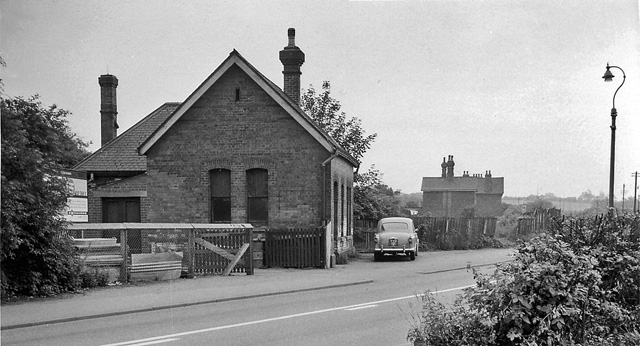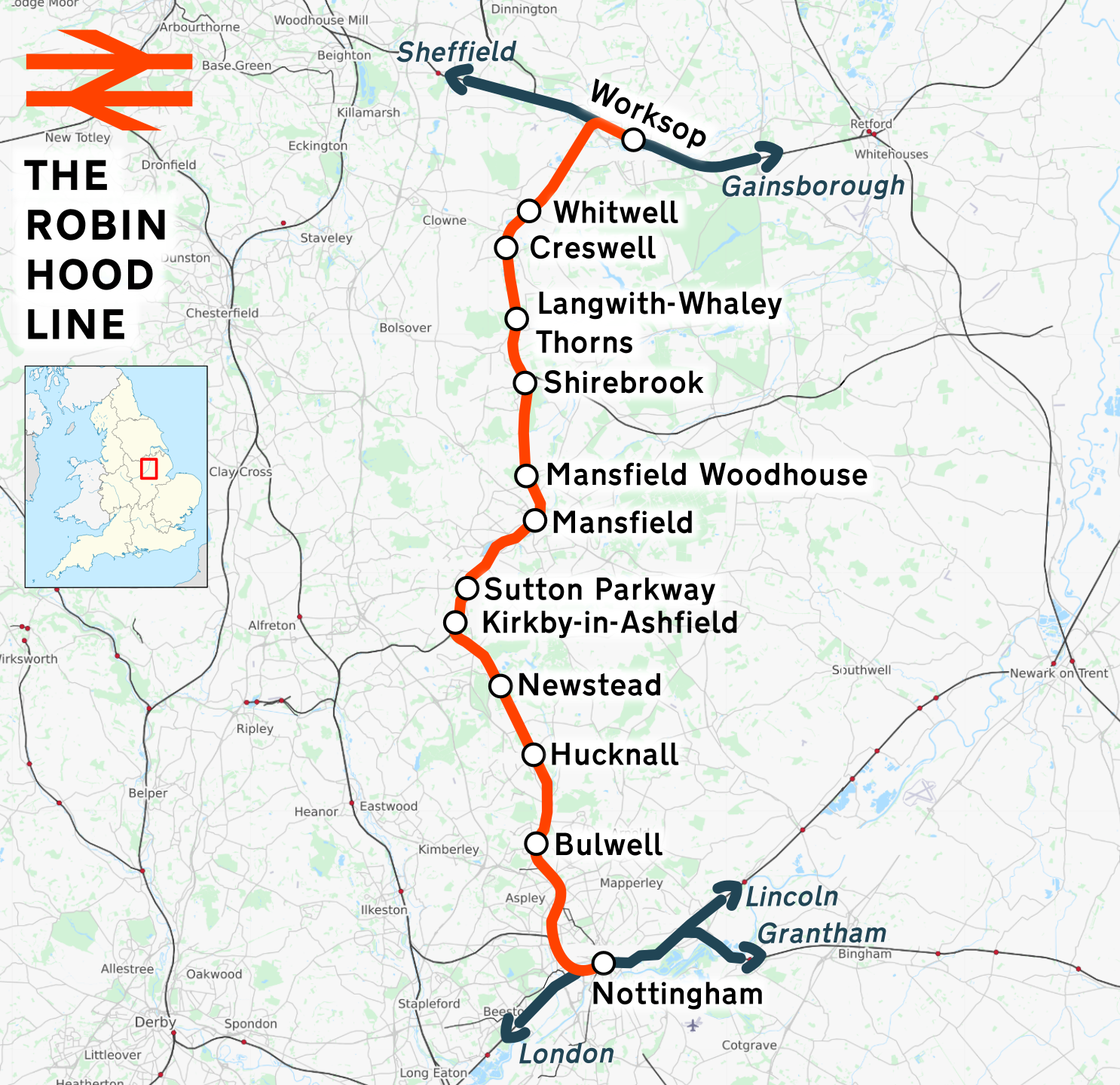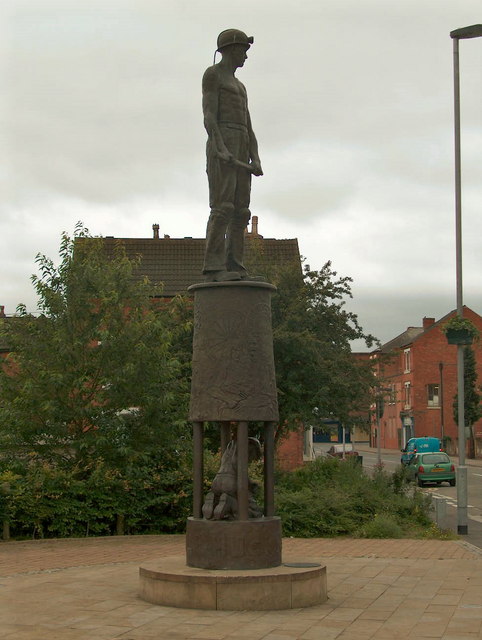|
Butler's Hill Railway Station
Butler's Hill railway station was a former station on the Great Northern Railway's Nottingham to Shirebrook line.British Railways Pre-Grouping Atlas and Gazetteer. The station should not be confused with the Butler's Hill tram stop of the Nottingham Express Transit (NET) system, which is some to the south-east. The tram stop is situated on the alignment of the former Midland Railway route from Nottingham to Worksop, which is now shared between the NET and the Robin Hood railway line The Robin Hood Line is a railway line running from Nottingham to Worksop, Nottinghamshire, in the United Kingdom. The stations between Shirebrook and Whitwell (inclusive) are in Derbyshire. Passenger services are operated by East Midlands Rai ..., but there was never a railway station at its location. Viewed for appropriate area with stations and station labels active. References Disused railway stations in Nottinghamshire Railway stations in Great Britain opened in 1882 Rail ... [...More Info...] [...Related Items...] OR: [Wikipedia] [Google] [Baidu] |
Butler's Hill
Butler's Hill is a residential area near to the town centre of Hucknall. It is approximately seven miles north-west of Nottingham, England. The Butler's Hill tram stop is adjacent to Butler's Hill, and is on the Hucknall branch of the Nottingham Express Transit. The former Butler's Hill railway station, was situated on the, now closed, Great Northern Railway's Nottingham to Shirebrook line. The former Midland Railway route from Nottingham to Worksop also passed through Butler's Hill, but the Midland never had a station there. The alignment of the Midland line is now shared by the Robin Hood railway line and Nottingham Express Transit. Viewed for appropriate area with stations and station labels active. The footbridge over the tram stop links Butler's Hill with Bestwood Village via the Mill Lakes, part of Bestwood Country Park. The nearby Broomhill park was the former site of Sherwood Zoo, which went bankrupt Bankruptcy is a legal process through which people or other entiti ... [...More Info...] [...Related Items...] OR: [Wikipedia] [Google] [Baidu] |
Nottingham
Nottingham ( , East Midlands English, locally ) is a city status in the United Kingdom, city and Unitary authorities of England, unitary authority area in Nottinghamshire, East Midlands, England. It is located north-west of London, south-east of Sheffield and north-east of Birmingham. Nottingham has links to the legend of Robin Hood and to the lace-making, bicycle and Tobacco industry, tobacco industries. The city is also the county town of Nottinghamshire and the settlement was granted its city charter in 1897, as part of Queen Victoria's Diamond Jubilee celebrations. Nottingham is a tourist destination; in 2018, the city received the second-highest number of overnight visitors in the Midlands and the highest number in the East Midlands. In 2020, Nottingham had an estimated population of 330,000. The wider conurbation, which includes many of the city's suburbs, has a population of 768,638. It is the largest urban area in the East Midlands and the second-largest in the Midland ... [...More Info...] [...Related Items...] OR: [Wikipedia] [Google] [Baidu] |
Railway Stations In Great Britain Closed In 1932
Rail transport (also known as train transport) is a means of transport that transfers passengers and goods on wheeled vehicles running on rails, which are incorporated in tracks. In contrast to road transport, where the vehicles run on a prepared flat surface, rail vehicles (rolling stock) are directionally guided by the tracks on which they run. Tracks usually consist of steel rails, installed on sleepers (ties) set in ballast, on which the rolling stock, usually fitted with metal wheels, moves. Other variations are also possible, such as "slab track", in which the rails are fastened to a concrete foundation resting on a prepared subsurface. Rolling stock in a rail transport system generally encounters lower frictional resistance than rubber-tyred road vehicles, so passenger and freight cars (carriages and wagons) can be coupled into longer trains. The operation is carried out by a railway company, providing transport between train stations or freight customer faciliti ... [...More Info...] [...Related Items...] OR: [Wikipedia] [Google] [Baidu] |
Railway Stations In Great Britain Opened In 1882
Rail transport (also known as train transport) is a means of transport that transfers passengers and goods on wheeled vehicles running on rails, which are incorporated in tracks. In contrast to road transport, where the vehicles run on a prepared flat surface, rail vehicles (rolling stock) are directionally guided by the tracks on which they run. Tracks usually consist of steel rails, installed on sleepers (ties) set in ballast, on which the rolling stock, usually fitted with metal wheels, moves. Other variations are also possible, such as "slab track", in which the rails are fastened to a concrete foundation resting on a prepared subsurface. Rolling stock in a rail transport system generally encounters lower frictional resistance than rubber-tyred road vehicles, so passenger and freight cars (carriages and wagons) can be coupled into longer trains. The operation is carried out by a railway company, providing transport between train stations or freight customer faciliti ... [...More Info...] [...Related Items...] OR: [Wikipedia] [Google] [Baidu] |
Leen Valley Lines Of The Great Northern Railway
The Leen Valley lines of the Great Northern Railway were railway branch lines built to access the collieries in the Nottinghamshire coalfield in England. The Midland Railway had long been dominant in the area, but there was resentment against its monopolistic policies from coalowners, who encouraged the Great Northern Railway to build a line. The Leen Valley Line was opened in 1881; it ran as far as Annesley colliery. A passenger service was run the following year, and very considerable volumes of coal were hauled. Coal owners in areas further north made representations to the Great Northern Railway, which agreed to extend the line, and the Leen Valley Extension Line opened in 1892. The Manchester, Sheffield and Lincolnshire Railway had built a line on a nearby alignment including a long tunnel, and to avoid the cost of duplicating the tunnel, the GNR arranged to use the MS&LR tunnel to connect its Extension line to the original section. At its northern extremity, the line connecte ... [...More Info...] [...Related Items...] OR: [Wikipedia] [Google] [Baidu] |
Hucknall Town Railway Station
Hucknall Town railway station was a railway station on the Great Northern Railway's Nottingham to Shirebrook line. It served the market town of Hucknall in Nottinghamshire Nottinghamshire (; abbreviated Notts.) is a landlocked county in the East Midlands region of England, bordering South Yorkshire to the north-west, Lincolnshire to the east, Leicestershire to the south, and Derbyshire to the west. The traditi ..., England. History Present day No trace of the station remains. The site is now occupied by the annexed petrol station of a supermarket built on the former trackbed. References Disused railway stations in Nottinghamshire Railway stations in Great Britain opened in 1882 Railway stations in Great Britain closed in 1931 Former Great Northern Railway stations Ashfield District {{EastMidlands-railstation-stub ... [...More Info...] [...Related Items...] OR: [Wikipedia] [Google] [Baidu] |
Bestwood Colliery Railway Station
Bestwood Colliery railway station was a former station on the Great Northern Railway Nottingham to Shirebrook Shirebrook is a town in the Bolsover district in Derbyshire, England. Close to the boundaries with the districts of Mansfield and Bassetlaw of Nottinghamshire,OS Explorer Map 270: Sherwood Forest: (1:25 000): it had a population of 13,300 in ... line.British Railways Pre-Grouping Atlas and Gazetteer. References Disused railway stations in Nottinghamshire Railway stations in Great Britain opened in 1882 Railway stations in Great Britain closed in 1931 Former Great Northern Railway stations Gedling {{EastMidlands-railstation-stub ... [...More Info...] [...Related Items...] OR: [Wikipedia] [Google] [Baidu] |
Robin Hood Railway Line
The Robin Hood Line is a railway line running from Nottingham to Worksop, Nottinghamshire, in the United Kingdom. The stations between Shirebrook and Whitwell (inclusive) are in Derbyshire. Passenger services are operated by East Midlands Railway. The line in its present form opened to passengers in stages between 1993 and 1998. Following the Beeching cuts of the 1960s, the line had been freight-only. The cuts had left Mansfield as one of the largest towns in Britain without a railway station. History The majority of the current Robin Hood Line re-uses the former Midland Railway (MR) route from Nottingham to Worksop. However, due to rationalisation leading to track removal in order to save the costs of maintaining the tunnel north of Annesley, the through route was severed in the 1970s. Northwards from Nottingham, the freight-only line remained intact as far as Newstead, where it had served the now closed Newstead Colliery. Southwards from Worksop, the line followed the ... [...More Info...] [...Related Items...] OR: [Wikipedia] [Google] [Baidu] |
Worksop
Worksop ( ) is a market town in the Bassetlaw District in Nottinghamshire, England. It is located east-south-east of Sheffield, close to Nottinghamshire's borders with South Yorkshire and Derbyshire, on the River Ryton and not far from the northern edge of Sherwood Forest. Other nearby towns include Chesterfield, Doncaster, Retford, Gainsborough and Mansfield. Worksop had a population of 41,820 as of the 2011 Census and it is twinned with the German town Garbsen. History Anglo-Saxon and Anglo-Norman history Worksop was part of what was called Bernetseatte (burnt lands) in Anglo-Saxon times. The name Worksop is likely of Anglo Saxon origin, deriving from a personal name 'We(o)rc' plus the Anglo-Saxon placename element 'hop' (valley). The first element is interesting because while the masculine name Weorc is unrecorded, the feminine name Werca (Verca) is found in Bede's ''Life of St Cuthbert''. A number of other recorded place names contain this same personal name element. In ... [...More Info...] [...Related Items...] OR: [Wikipedia] [Google] [Baidu] |
Midland Railway
The Midland Railway (MR) was a railway company in the United Kingdom from 1844. The Midland was one of the largest railway companies in Britain in the early 20th century, and the largest employer in Derby, where it had its headquarters. It amalgamated with several other railways to create the London, Midland and Scottish Railway at grouping in 1922. The Midland had a large network of lines emanating from Derby, stretching to London St Pancras, Manchester, Carlisle, Birmingham, and the South West. It expanded as much through acquisitions as by building its own lines. It also operated ships from Heysham in Lancashire to Douglas and Belfast. A large amount of the Midland's infrastructure remains in use and visible, such as the Midland main line and the Settle–Carlisle line, and some of its railway hotels still bear the name '' Midland Hotel''. History Origins The Midland Railway originated from 1832 in Leicestershire / Nottinghamshire, with the purpose of serving the needs o ... [...More Info...] [...Related Items...] OR: [Wikipedia] [Google] [Baidu] |
Hucknall
Hucknall, formerly Hucknall Torkard, is a market town in the Ashfield district of Nottinghamshire, England. It lies 7 miles north of Nottingham, 7 miles south-east of Kirkby-in-Ashfield, 9 miles from Mansfield and 10 miles south of Sutton-in-Ashfield. It is the second largest town in the Ashfield district after Sutton-in-Ashfield. Hucknall is north-west of Nottingham, on the west bank of the Leen Valley, on land which rises from the Trent Valley in the south and extends northwards to Kirkby-in-Ashfield. The Whyburn or Town Brook flows through the town centre. Farleys Brook marks its southern boundary. Due to the mass amount of housing and industrial estates along the southside of the town. Hucknall is contiguous with the wider City of Nottingham with the suburbs of Bulwell and Bestwood Village both to the south and southeast. The town's highest point is Long Hill, at above sea level, with views over the city and Trent Valley, which descends to 22–24 metres (72–79&nbs ... [...More Info...] [...Related Items...] OR: [Wikipedia] [Google] [Baidu] |







